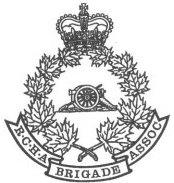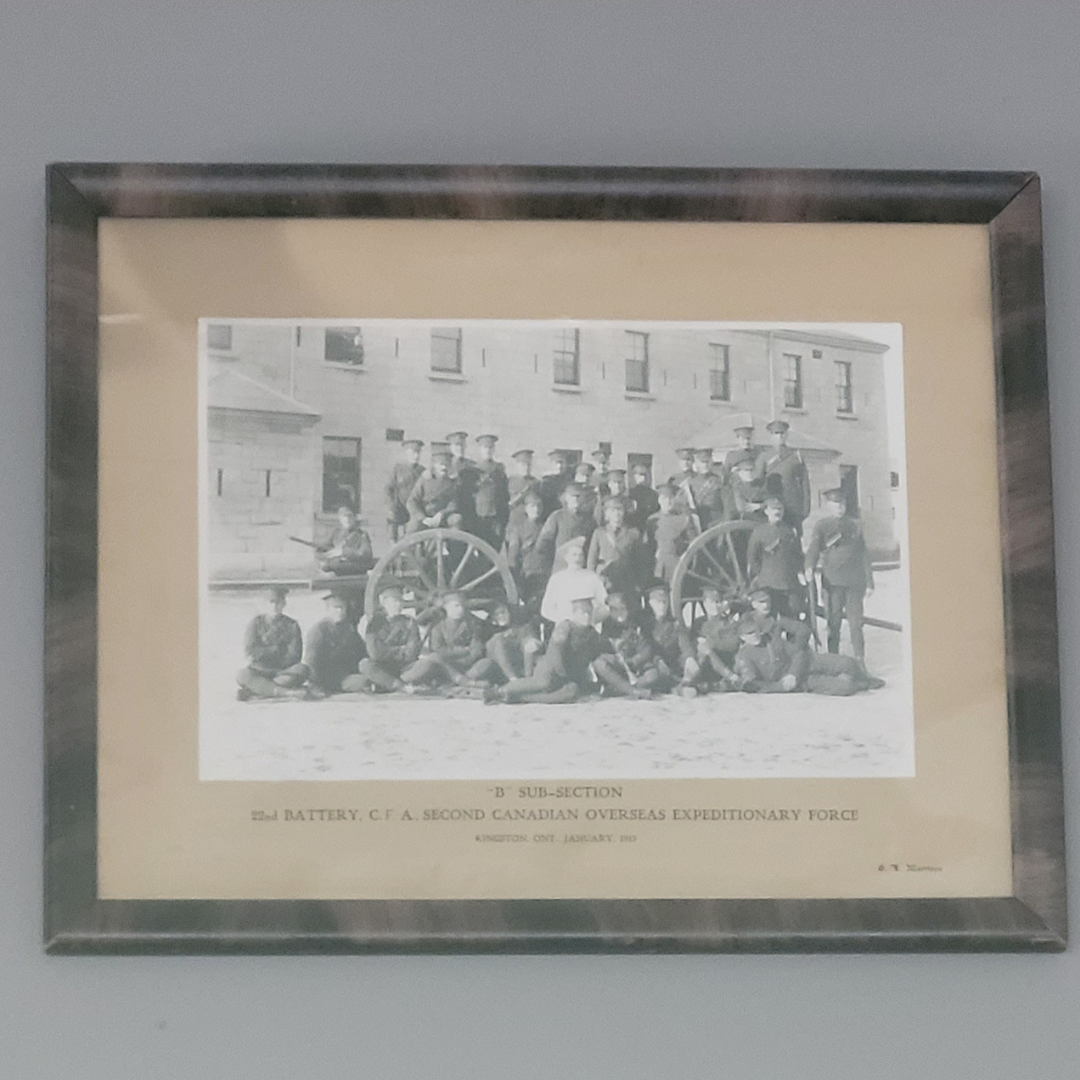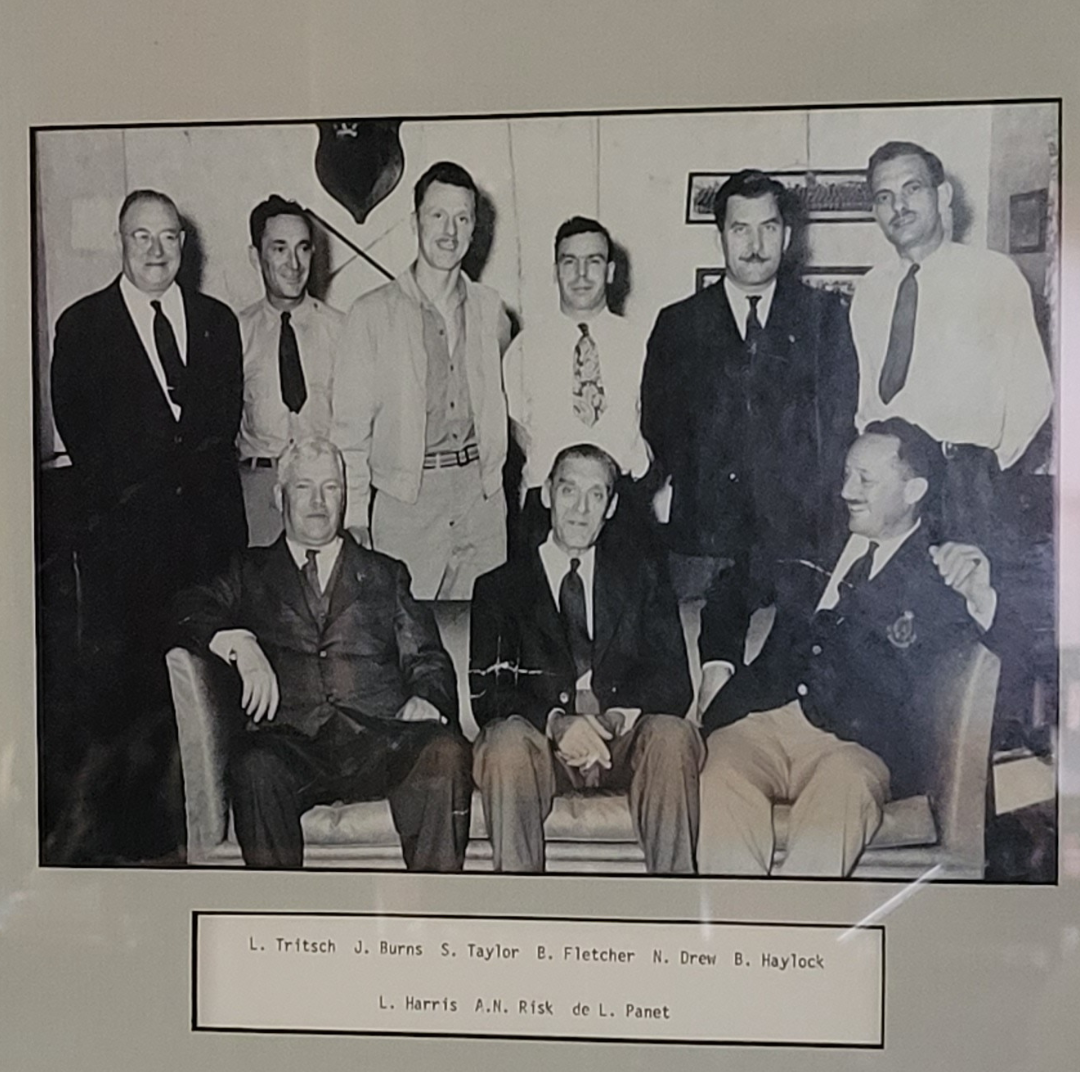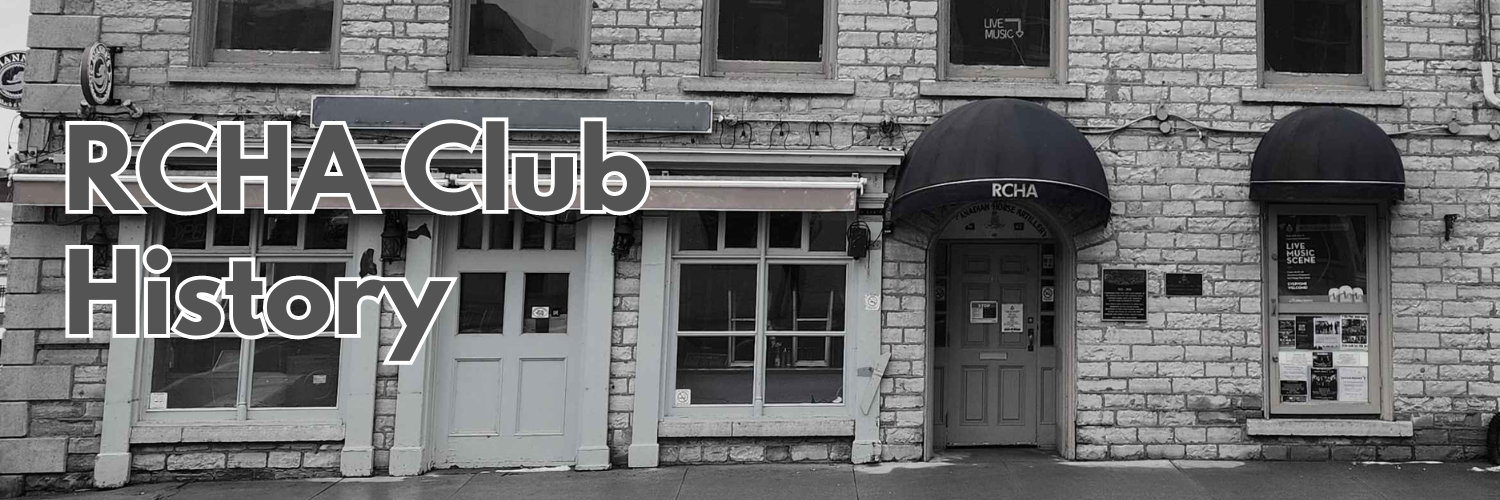For a more detailed history of the RCHA, click here
Historical highlights of the RCHA Club in Kingston Ontario:
 This Association, which was closed at the start of WW II, was reborn in January 1947 on the initiative of Barney Haylock, Syd Taylor, Jimmy Burns, Don Harper, Len Tritsch, Allen Risk and Doug Tyrrell. Their aim was to provide a place where ex-members of the RCHA Brigade could get together and enjoy mutual friendship.
This Association, which was closed at the start of WW II, was reborn in January 1947 on the initiative of Barney Haylock, Syd Taylor, Jimmy Burns, Don Harper, Len Tritsch, Allen Risk and Doug Tyrrell. Their aim was to provide a place where ex-members of the RCHA Brigade could get together and enjoy mutual friendship.
By March 1947, they had agreed to rent the top 2 floors of what is our current building, for $50/month. Since it had not been used since WW 1, when it was used as an Army Medical Centre, the area required major renovations. After months of heavy work by volunteers, and donations of furniture etc, they had the official opening of the Club on July 18, 1947, as a Provincial Corporation Without Share Capital.
Their outreach work included a Welfare Committee to address the needs of members in hospital, and a Benevolent Fund to provide Christmas presents to children of members, and give donations to Orphanages & Welfare Homes.
In February 1951, the Club sustained a serious loss by fire caused by an overheated oil stove. Fortunately, the insurance covered the cost of rebuilding and they were back in business by October 1951.
In 1957, the building was purchased for $54,000 from Mrs Lingham who held a 15-year mortgage. Toye's wholesale business leased the first floor until 1973.
Major renovations, including repair of outside walls took place in 1967.
By May 1968 the original mortgage was paid up.
As part of the 1969 Kingston Winter Carnival, the RCHA organized a Historic Hockey series between Queen's and RMC to commemorate the first game in 1886, which continues to the present.
In the late 70's, part of the property that ran from the building to the tracks along the lakeshore was sold to Paron Corporation for $50,000 and the cost of renovations to the clubrooms.
 In 1980, the Historical Committee was founded to preserve and maintain the history of the Association and care for the many artifacts. A lounge was built on the second floor, and a kitchen was installed. The Constitution was changed to allow women in the clubrooms as guests at anytime.
In 1980, the Historical Committee was founded to preserve and maintain the history of the Association and care for the many artifacts. A lounge was built on the second floor, and a kitchen was installed. The Constitution was changed to allow women in the clubrooms as guests at anytime.
From time to time the Club had a paid manager, but cash flow did not permit this to continue - committed volunteers have filled the void.
To comply with a new City Bylaw smoking in the club was discontinued in 2003.
Associate status was made available to women in 2004 and 7 joined the Association in the first year.
In 2005, an exterior wall required costly repairs, and some electrical updates were made.
Membership fees were $5 in 1947, and increased slightly over the years but had not kept up with the real costs of operating the Association and maintaining the building. So in 2006, the Board approved an annual fee of $150. Reduced to $100 for 2011 to encourage renewed and new memberships.

In January 2007, the military artifacts were moved to open view on the second floor.
In 2010, the Club risked being closed but was saved by an outpouring of support, especially from the musician community, new members/associates and people stepping up as volunteers.
In 2011 the first floor was leased to a restaurant and as part of the renovations major upgrades were made to the basement and first floor structure.
The club is supported by membership fees, room rental, bar sales and significant hours provided by volunteers.
Site By Social Schmoes ![]()
![]()
![]()
